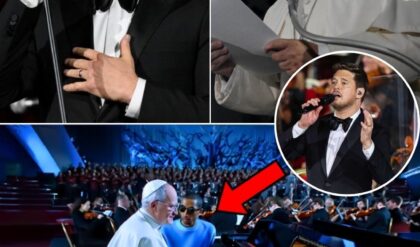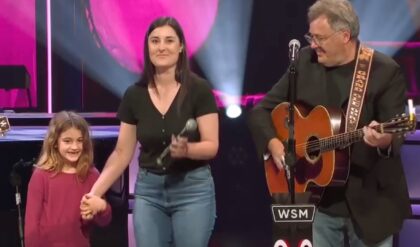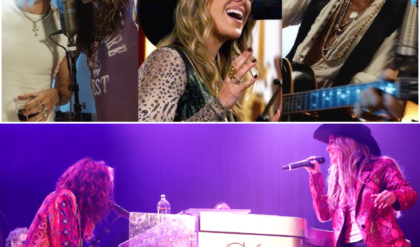Los Angeles, CA – May 28, 2025 – As the entertainment world continues to celebrate the legacy of Steven Spielberg’s 2021 remake of West Side Story, the legendary director has shared new insights into the behind-the-scenes magic that brought the musical to life—particularly the remarkable contributions of its breakout star, Rachel Zegler. In recent interviews, Spielberg has opened up about Zegler’s dedication, emotional depth, and the collaborative spirit she brought to the set, offering fans a deeper appreciation for the young actress who, at just 17, stepped into the iconic role of Maria. These revelations not only highlight Zegler’s talent but also underscore the heartfelt environment that made the film a critical success, even as it faced challenges at the box office.
West Side Story, Spielberg’s reimagining of the 1957 Broadway musical by Leonard Bernstein and Stephen Sondheim, tells the timeless story of star-crossed lovers Tony and Maria amidst the racial tensions between the Jets and the Sharks in 1950s New York City. The film, which also stars Ansel Elgort as Tony, Ariana DeBose as Anita, and Rita Moreno in the new role of Valentina, was a passion project for Spielberg, who had dreamed of directing a musical since his childhood. When it premiered in December 2021, the film earned widespread acclaim, securing seven Academy Award nominations, including Best Picture, and winning a Best Supporting Actress Oscar for DeBose. Zegler herself made history by becoming the youngest winner of the Golden Globe for Best Actress in a Musical or Comedy at 20, and the first Latina of Colombian descent to win in that category.

Zegler’s journey to West Side Story began with an open casting call in January 2018, when Spielberg sought a Latina actress to authentically portray Maria. At 16, Zegler, a Colombian-American from New Jersey, submitted a self-tape of herself singing “Tonight” and “I Feel Pretty,” drawing on her experience playing Maria at the Bergen Performing Arts Center in 2017. Out of over 30,000 applicants, Zegler’s raw talent stood out, leading to a grueling nine-audition process before she landed the role. Spielberg later recalled to Variety that hers was the second self-tape he saw, and her emotional presence and technical skill were so striking that he knew early on she was the one. “I wonder what that girl singing show tunes in her bathroom would think of me now,” Zegler reflected in a 2021 interview, a sentiment that captures the whirlwind of her rise to fame.
Behind the scenes, Zegler’s dedication was evident in every aspect of the production. Spielberg recently shared that he was so moved during rehearsals that he couldn’t help but join the cast, singing off-key and dancing with what he humorously described as “three left feet.” This collaborative spirit fostered an environment where Zegler thrived, often singing standards and Broadway hits alongside Spielberg between takes. “I don’t think there was a moment of actual quiet,” Zegler noted in a BuzzFeed interview, highlighting the joyful atmosphere on set. She and Spielberg would frequently duet on classics, a testament to their shared love for musical theater, which created a bond that carried through the entire shoot. This lighthearted camaraderie contrasted with the film’s heavy themes, allowing the cast and crew to find moments of levity amidst the emotional intensity of the story.
One of Zegler’s most challenging moments came during the filming of “A Boy Like That/I Have a Love,” a duet with DeBose that required two days of live singing. The song, one of the most demanding in the score, captures Maria’s anguish and defiance as she grapples with her love for Tony after he kills her brother, Bernardo. Zegler recalled the vocal strain of performing live, a technique Spielberg insisted on for authenticity, noting that it pushed her to her limits. “That was some of the most difficult music in the score,” she said, but the effort paid off, with the scene becoming a standout for its raw emotional power. Spielberg praised her resilience, telling her after the final take, “You just ran an emotional marathon, and you won.” This compliment, Zegler later shared, was the encouragement she needed to push through the grueling days.
Another revelation from Spielberg highlights Zegler’s professionalism under pressure. During a particularly intense scene, cinematographer Janusz Kaminski positioned a bright light directly in Zegler’s face, and Spielberg instructed her not to blink—a directive that tested her endurance as a newcomer. “Imagine having a whole light in your face and you have to A) not blink, B) not tear up, and C) not die because it’s your first day on your first movie ever,” Zegler tweeted in 2023, reflecting on the experience with humor. She jokingly credited her “eyeballs of steel” for her Golden Globe win, but the moment underscores her ability to handle Spielberg’s exacting direction with grace, even as a 17-year-old making her film debut.
Zegler’s emotional depth was particularly evident in the film’s climactic scene, which she described as the most challenging of the shoot. Without spoiling the ending for those unfamiliar with the story’s roots in Romeo and Juliet, the scene required Zegler to point a gun at her best friend on set, a moment that pushed her to the brink. “It’s a very emotional scene, and I had to point a gun at my best friend, and that’s just never fun,” she told BuzzFeed. Her performance in this scene, marked by a profound sense of loss and rage, tied together the film’s themes of love, hate, and tragedy, leaving audiences in tears. Spielberg’s direction allowed Zegler to channel Maria’s trauma authentically, making the remake’s ending even more impactful than the 1961 original, according to some critics.
Beyond her on-screen work, Zegler’s behind-the-scenes efforts extended to cultural authenticity, a priority for Spielberg after the original film’s criticized use of brownface on white actors like Natalie Wood. Zegler, who is Colombian-American, worked extensively with dialect coaches Tom Jones, Victor Cruz, and Julio Monge to perfect her accent, ensuring Maria’s Puerto Rican heritage was portrayed with nuance. She also collaborated with choreographer Justin Peck and screenwriter Tony Kushner to craft lighter moments, such as a scene where Maria clumsily hides her late-night meeting with Tony, adding a layer of youthful joy to the character. “West Side Story does such a wonderful job at exploring the idea of Latin joy,” Zegler noted, emphasizing her commitment to showcasing Maria’s resilience and hope despite the story’s tragic arc.
Spielberg’s faith in Zegler extended beyond West Side Story. While the film was still in post-production, he advocated for her casting as Snow White in Disney’s live-action remake, personally recommending her to director Marc Webb. At the time, no footage of Zegler as Maria had been released, making Spielberg’s endorsement a pivotal moment in her career. “The reality is, I was given a chance because I could sing,” Zegler later told Allure magazine, reflecting on how Spielberg’s support opened doors for her. Since then, Zegler has starred in Shazam! Fury of the Gods, The Hunger Games: The Ballad of Songbirds & Snakes, and Snow White (released earlier this year), and made her Broadway debut as Juliet in Romeo and Juliet in 2024, cementing her status as one of Hollywood’s brightest young stars.
The behind-the-scenes stories also reveal the emotional toll of the shoot, which Zegler described as a “baptism by fire.” Her first day on set involved filming the scene where Maria meets Tony under the bleachers at the gym, requiring her to kiss Elgort—a nerve-wracking experience for a newcomer. “It was the most terrifying,” she admitted, but Spielberg’s encouragement after her first take—“Congrats, it’s your first take in a motion picture. There’s going to be many, many more”—helped her feel at home. The crew’s warmth further eased her nerves, creating a supportive environment that allowed her to take risks, like singing live and tackling emotionally charged scenes.
Fans have reacted warmly to Spielberg’s revelations, with many taking to social media to express their admiration for Zegler’s dedication. “Rachel Zegler’s work ethic at 17 is insane—she was singing live, not blinking on cue, and running emotional marathons for Spielberg. No wonder she’s a star now,” one user wrote on X. Others have praised the collaborative spirit Spielberg described, noting how it reflects the film’s heart. Despite its critical acclaim, West Side Story struggled at the box office, grossing just $76 million against a $100 million budget, a fact some attribute to its release during the COVID-19 pandemic and others to audiences’ hesitation to revisit a classic. Yet, the film’s legacy endures, particularly for its authentic representation and Zegler’s star-making turn.
Looking back, Spielberg’s revelations paint a picture of a young actress who, despite her inexperience, rose to the occasion with professionalism and heart, earning the respect of one of cinema’s greatest directors. For Zegler, now 24 and a seasoned performer, those early days on West Side Story remain a defining chapter. As she prepares for her West End debut in Evita this summer, her journey from a New Jersey high schooler to a Hollywood leading lady continues to inspire. And for fans, Spielberg’s stories offer a glimpse into the magic behind the magic—a reminder that even in a high-stakes production, the simple act of singing and dancing together can create a legacy that lasts.




